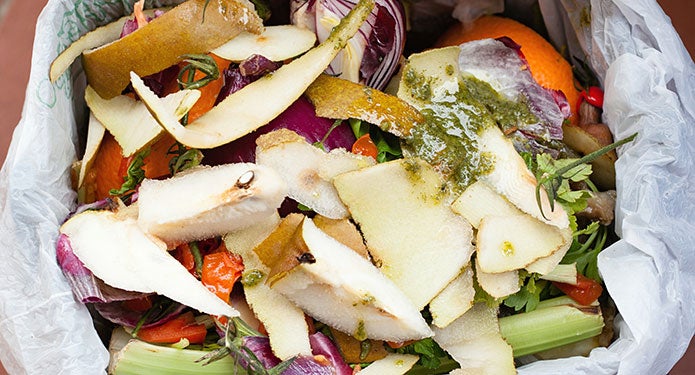“We’ll leave the light on” may be a welcoming slogan for a hotel chain, but it’s not a very welcome idea when it comes to reducing waste. And whether you operate in a healthcare, K-12, or college and university setting, you should welcome waste reduction.
Waste adds up, and reducing food, energy, and water waste even a little bit can make a big difference. The first challenge is to identify where waste is happening. Once you pinpoint wasteful practises, you can begin measuring, managing, and controlling costs. Here are five money-saving areas to consider.
Ways to Reduce Kitchen Waste
1) Reduce Food Waste
Review purchasing and menu planning. If you buy too much or fail to build a menu based on the food in stock, you risk having food spoil or expire unused. But big savings may result from looking at what happens after the food is purchased. Training employees to trim food more efficiently can result in less waste and more taste.
A waste bucket to collect trimmings in the prep area is a good start, says Jane Wilsher, Foodservice Director at Central Michigan University’s Merrill Residential Restaurant. Examine what’s getting tossed out and educate your staff, if needed.
“If a whole tomato is being discarded because of a bruise, you need to consider whether the bruise can be cut away and the tomato can be chopped up for tacos,” she says.
Overproduction is another costly concern. Just 15 uneaten portions per day at 75 cents per portion can add up to thousands of dollars in a year’s time.
2) Composting, Recycling, and Donating
There’s always some overproduction and waste, but cost savings and environmental benefits can be found in the trash.
Wilsher says CMU’s Mount Pleasant, Michigan, campus uses 60 collection bins that hold 64 gallons of food waste each for composting. The university’s Facilities Department collects the filled bins three times a week and takes them to a local composting company to create soil treatments—90 percent of which is sold to local farmers.
She says a comprehensive recycling program also helps cut costs. Cardboard, aluminum, plastics, glass, Styrofoam, batteries, and paper are all recycled. Although she is unable to provide exact cost savings, Wilsher says there is a noticeable reduction in landfill-bound trash.
At Traverse City Area Public Schools, Food and Nutrition Services Director Tom Freitas says his Michigan district reduces waste removal costs by donating items such as unused fruit cups or extra pizzas, to the Goodwill Food Rescue program.
3) Service Sense
To reduce post-production waste, take a look at service. An orange sounds delicious, but peeling it is a hassle, so it may get discarded uneaten. Consumption improves when oranges are peeled, apples are sliced, and condiment packets are placed on trays as needed.
“The salad bar is a big money and food saver,” Freitas says. “Students take only what they want, and we can monitor what’s popular and what’s not.”
4) Energy Costs
Save money with a schedule for turning ovens on and off. Don’t heat the steam table too far in advance of service. Cut cooler costs by making sure the plastic door strips are functioning properly. Consider compact fluorescent lamps for lighting fixtures and install occupancy sensors to reduce lighting costs.
5) Water Conservation
Cleanup costs can be reduced substantially by using less water, especially hot water. Going trayless has helped CMU save on dishwashing, as well as having another surprise side benefit.
“Because we don’t have trays to wash, we’re saving on dish machine costs, water usage, and electricity,” Wilsher says. “We also save on food costs—students can’t fill a tray to overflowing with food they won’t eat, so less food gets put in the trash.”

























